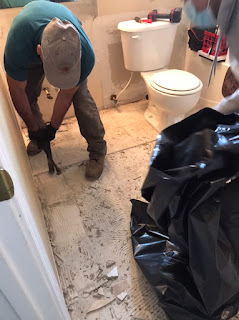Significance Of Structural Drying in Water Damage Restoration
Structural drying makes an essential stage in a water extraction and removal process. It includes leveraging specialized methods and tools to air out, dehumidify, and make the structure moisture-less to prevent any lasting damage.
Many use structural drying and dehumidification interchangeably during a water address process; however, it should be noted that both perform different tasks. Structural drying in Conyers or worldwide removes moisture from materials, while dehumidification removes water from the air.
Why should the drying and dehumidification be done on time?
After a water disaster, it is necessary to run a structural drying and dehumidification process to extract moisture that might have developed behind a wall, under flooring, or even in the HVAC system. When left untreated, the moisture gives rise to mold and mildew growth in the property and household materials, damaging their quality and making the property unlivable for occupants.
Benefits of structural drying and dehumidification
It is crucial to consider while restoring a residential or commercial property. The methods are essential to accelerate the drying process and restore the property to its original.
Here are some primary advantages that the methods offer.
It saves time for both the house owners and the service providers.
It prevents the house owners from secondary damage and expenses.
It limits reconstruction needs and reduces insurance claim costs.
It allows homeowners to get back to normal life quickly.
It prevents the property from mold and mildew infestation.
It allows the service providers to salvage usable material that otherwise would have been eliminated.
It prevents property owners from stress and offers emotional support at hard times.
It dehumidifies the entire property and its assets.
What are the principles of structural drying?
The first one is water extraction, wherein physical water extraction is the speediest way to get rid of water. But if the carpet is soaked, it might take longer to dry, and the service provider may pull it up to complete the structural drying process.
The next step is dehumidifying the area to eliminate the moisture content in the room. This is crucial because drying out the floor and walls doesn't necessarily eliminate the room's moisture content. Without dehumidification, moisture can get back into the belongings of the room, which might eventually damage the property.
These are the two main principles of structural drying; the others are controlling temperature and using cutting-edge equipment to get rid of moisture content. If you want the best quality structural drying and dehumidification process or get septic backup in Conyers, connect with ServiceMaster by Lovejoy.
.jpg)


Comments
Post a Comment